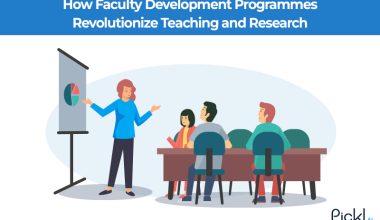Summary- Industry partnerships refer to collaborations between businesses, academic institutions, and organizations that work together to achieve their mutual goals. From co-developing products to launching partnership courses, these collaborations are shaping the innovation of the future and workforce development.
Introduction
In a world driven by innovation, industry partnerships are no longer optional; they’re strategic necessities. These collaborations bring together the strengths of different organizations, allowing them to share expertise, technology, and resources. From joint research & development courses that prepare future talent, such collaboration helps industries adapt to rapid market changes and maintain a competitive edge.
Key Takeaways:
- Industry partnerships connect businesses, academia, and public institutions for shared goals.
- They accelerate innovation, skill development, and product development.
- There are multiple types- from talent pipelines to co-innovation ventures.
- Real-life collaborations show measurable business impact.
- The future of partnership lies in data sharing, digital ecosystems, and outcome-driven collaborations.
Understanding Industry Partnerships and How They Work
An industry partnership is a mutual collaboration between two or more entities, basically between businesses, universities, or industry associations. They basically work together for a common goal or a purpose. Each entity contributes unique resources like research expertise, funding, technology, or data access.
Example: A manufacturing firm partners with a technical university to co-develop automation courses in manufacturing. The company gains skilled workers, and students gain hands-on experience. It’s a win-win situation for both entities. In the same length, Pickl.AI has been partnering with several universities to upskill and upgrade the knowledge of the students in the AI domain.
Partnerships like these focus on three core things: workforce readiness and shared market growth.
Why are Industry Partnerships Necessary for Growth?
In today’s world, no company works in isolation. With fast-changing technologies and customer needs, partnerships help fill critical gaps. Here’s why the partnerships are necessary for growth:
- Access to Expertise: Businesses get access to academic or technical know-how by partnering with academic institutions.
- Faster Innovation: Shared research & development reduces time-to-market for new products.
- Talent Development: Partnerships courses align education with real-world industry skills.
- Resource Optimization: Shared infrastructure and costs improve return on investment.
- Enhanced Brand Credibility: Collaborating with reputed partners builds trust and innovation.
Example
IBM’s partnerships with reputed universities and other academic institutions for AI and cloud computing courses ensure a continuous talent pipeline. Moreover, it keeps the brand at the forefront of technology education.
Different Types of Industry Partnerships

Industry partnership is emerging as a norm, and this is not just limited to the professional level but at the same time, you can find colleges entering partnership with AI companies like Pickl.AI to enhance their knowledge and make their students job ready. Here is a brief overview of the different types of industry partnerships:
Academic and Research Partnerships
Under academic and research partnerships, companies or businesses work with different universities to develop new technologies or run innovation labs.
Example: Google’s partnership with Stanford University for AI research.
Talent Development Collaborations
Businesses team up with educational/academic institutions to create job-ready folks through partnership courses, internships, apprenticeships, etc.
Example: Microsoft collaborates with multiple colleges to run data science programs.
Supply Chain or Vendor Partnerships
Two or more organizations align operations to improve efficiency and cost control.
Example: Automotive manufacturers collaborating with logistics providers to optimize delivery routes.
Strategic and Technology Partnerships
Organizations combine intellectual property, technology, or distribution channels to co-create products or services.
Example: Apple and Nike partner to create fitness products like Apple Watches.
Community and Non-Profit Partnerships
Businesses and companies partner with NGOs or the government to create social impact in society.
Example: Cisco’s Networking Academy empowers underprivileged youth with IT skills.
Key Benefits of Industry Partnerships

There are various benefits of industry partnerships. The success of partnerships lies in shared growth and measurable results.
- Accelerated Innovation: Two teams of experts working together reduce duplication and create faster results.
- Workforce Development: Students gain relevant, employable skills through partnership courses and internships.
- Shared Infrastructure: Research facilities and labs are jointly used, cutting costs.
- Increases Market Access: Each partner leverages the other’s networks and customer base.
- Risk Reduction: Collaborative funding and joint testing minimize market entry risks.
Example
Tesla and Panasonic’s partnership on battery technology led to faster product innovation while sharing research and development costs.
Real-Life Industry Partnerships That Made an Impact
There are various real-life industry partnerships that made a great impact, highlighting the importance of partnerships.
- BMW & Intel & Mobileye: Collaborated to develop driving technology, combining automotive, chip, and AI expertise.
- Coca-Cola & World Wildlife Fund (WWF): Partnered for sustainable water resource management.
- Amazon Web Services & Coursera: Created partnership courses in cloud computing for career upskilling.
- Pfizer & BioNTech: A historic collaboration for COVID-19 vaccine development, showcasing the power of fast, science-driven partnerships.
These examples demonstrate that partnerships can transform industries and solve global challenges.
Practical Steps to Build Strong Partnerships
To ensure a partnership succeeds, organizations must focus on structure and trust.
Align on Purpose and Outcomes
All the entities involved in partnerships should have a shared purpose, measurable KPIs, and outcomes
Define Governance and Communication
Always be clear in your communication. Set up joint review meetings, project leads, and escalation paths.
Manage Intellectual Property (IP)
Clarify ownership of co-created technologies and publications early on.
Start with a Pilot Program
Test collaboration effectiveness before expanding the scope. Start with a pilot or a test program, and if it succeeds, scale it.
Focus on Transparency
Share progress, challenges, and results regularly to maintain trust.
Example: A startup and a university launching a cybersecurity course start with one batch before scaling it nationwide to check if it succeeds or not.
What is the Future of Industry Partnerships?
The next wave of partnerships will be digital, data-driven, and ecosystem-oriented. Let’s understand in more detail with a few pointers.
Data Collaboration
In the future, organizations will increasingly share and analyze data together, but securely. Data collaboration means two or more entities (like hospitals, universities, or tech companies) using shared data platforms to conduct research or solve problems without exposing sensitive information.
Example: A pharma company and a university might share anonymized clinical data to speed up the drug discovery process.
Cross-Sector Ecosystems
A cross-sector ecosystem brings together partners from diverse industries, including technology, government, academia, and NGOs, to address large-scale societal challenges such as climate change, healthcare access, or smart city development.
Example: A tech firm provides AI tools, a government supplies data and policy support, and universities contribute research expertise to create smart city traffic solutions.
Micro-Partnerships
Unlike traditional long-term alliances, micro-partnerships are short-term collaborations designed for a specific, measurable outcome such as testing a new prototype, running a pilot program, or training a small group of students.
Example: A startup partners with an e-learning platform for a three-month pilot course to test demand before launching a full program.
Global Talent Exchanges
With remote work becoming the norm, global talent exchanges will allow universities and companies to run virtual internship and learning programs across borders. This model connects diverse talent with global employers.
Example: A European tech company offers remote data analytics internships to students in India or Africa, providing real-world experience while accessing a diverse talent pool.
Conclusion
In today’s world, where everything is interconnected, industry partnerships are the backbone of sustainable innovation and skill development. Whether through joint research, co-created courses, or tech collaborations, they enable organizations to achieve together what they couldn’t alone.
Businesses that invest in long-term, transparent, and outcome-oriented partnerships are the ones that will shape the future, one collaboration at a time.
Frequently Asked Questions
How do industry partnerships help universities prepare students for real jobs?
Universities collaborate with companies to co-design partnership courses that teach current industry tools and practices.
Can startups benefit from partnering with large corporations?
Absolutely. Startups often bring innovation but lack scale or distribution. Partnering with established firms helps them test products in real markets.
Example: A fintech startup collaborating with a national bank to pilot its mobile payment solution under a sandbox program before a nationwide rollout.
Are there real examples of global talent exchange programs?
Yes. Many universities now collaborate with global companies to provide remote internships and training.
Example: Google’s Student Developer Program allows students from around the world to work on open-source projects and gain real industry experience virtually.




